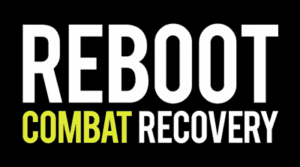The following excerpts come from Beyond Trauma by Dean Bonura.
…
The Trauma Narrative
Learning to reconstruct the trauma narrative and reframe trauma in religious terms leads to healing, post-traumatic growth, and greater satisfaction for many victims. These two aspects of narration are extremely useful in learning to reappraise events using biblical stories.1
 Generally, the use of stories helps by enabling soldiers to connect emotions with facts and events. Stories clarify perceptions. When stories are used in the company of others, confidence is built in the sufferer and the expression of support is enabled. We learn from one another’s stories and experiences. Talking eases the pain associated with trauma.
Generally, the use of stories helps by enabling soldiers to connect emotions with facts and events. Stories clarify perceptions. When stories are used in the company of others, confidence is built in the sufferer and the expression of support is enabled. We learn from one another’s stories and experiences. Talking eases the pain associated with trauma.
Narration may be verbalized or written. Both are useful techniques. When conducted in the context of a supportive, caring group, such as a church group or a group of fellow veterans, the interaction is therapeutic. Also, retelling the story tends to normalize the trauma and reduce the stress associated with it.
Narrative Reconstruction
Narrative reconstruction is an essential element of debriefing. When used effectively, it addresses not only the facts associated with the traumatic event but also the victim’s thoughts, emotions, and actions. Its use normalizes the traumatic experience. Employed early on, reconstruction mitigates negative stress reactions that typically occur later, such as PTSD.
In narrative reconstruction, the warrior is encouraged to relate the traumatic event in orderly detail, to address misconceptions and distortions. Since the experience of trauma is so emotionally laden, memories may be distorted. The retelling of the event serves to clarify perceptions, with the goal of normalizing the traumatic event for the sufferer.
…
Biblical Models for Healing
Theologically and spiritually speaking, these narrative themes resonate and should enable healing in veterans, who learn again to remember. Biblical models for healing—exemplified in the stories of Job, David, and Paul, along with the paradigm of the cross of Christ—all point to the efficacy of reframing the trauma narrative in ways that lead to healing. I am persuaded that these stories and similar stories, if they strike an emotional chord with the sufferer, can facilitate an emotional disconnect from the traumatic past.
The Benefits of Reframing the Narrative in Religious Terms
Others have successfully accommodated the use of narration and cognitive reframing to religious themes.7 They have concluded that religious reframing of traumatic events is beneficial for those suffering from PTSD. In an article on religious reframing in The International Journal for the Psychology of Religion, the authors predicted that the use of religious themes in writing about emotionally laden events would moderate participants’ mood states. Fifteen participants with PTSD wrote about their PTSD-triggering events in three sessions. Eighty percent of the participants included religious themes in their narratives. In those cases where religious themes were evident, a positive mood change was noted by the time of the third writing session, whereas those who did not use religious themes continued to indicate negative moods.8
…
Narrative Reconstruction and Scripture
 Narrative reframing is critical to the healing process. Narrative reconstruction is also very important. I believe the reconstruction of the trauma narrative is the first step to be taken by the warrior who is struggling with the effects of combat-related trauma. Again, narrative reconstruction is the retelling of the traumatic event to clarify what actually occurred and the role an individual played in the event. It is ideally suited to critical incident stress debriefing, and it is an effective tool if used soon after the event. But it is also useful later, when a soldier may be suffering from post-trauma stress. It is a tool used with various treatments, such as trauma incident reduction or exposure therapy. The idea, similar to reframing, is that with the retelling of the event, the emotional memory associated with the event is normalized or “delinked,” and the power of the event over the individual (its intrusiveness) is lessened.
Narrative reframing is critical to the healing process. Narrative reconstruction is also very important. I believe the reconstruction of the trauma narrative is the first step to be taken by the warrior who is struggling with the effects of combat-related trauma. Again, narrative reconstruction is the retelling of the traumatic event to clarify what actually occurred and the role an individual played in the event. It is ideally suited to critical incident stress debriefing, and it is an effective tool if used soon after the event. But it is also useful later, when a soldier may be suffering from post-trauma stress. It is a tool used with various treatments, such as trauma incident reduction or exposure therapy. The idea, similar to reframing, is that with the retelling of the event, the emotional memory associated with the event is normalized or “delinked,” and the power of the event over the individual (its intrusiveness) is lessened.
The Exodus story is an example of narrative reconstruction in Scripture. The Israelites endured four hundred years of slavery in Egypt, and their collective experience was traumatic. Their dramatic rescue from Egypt under the leadership of Moses, and the subsequent failure of Israel to enter into the Promised Land immediately, resulting in forty years of wandering in the wilderness, was also traumatic. As we consider this story in the Bible, we note it is often restated in part, to remind the people what happened to them and how God had rescued them (e.g., Deut.; Acts 7, 13). I believe the historical reconstruction of this trauma narrative served to normalize their national experience and contribute to their national identity. The retelling of the story not only reminded the people of their failures but also of God’s care and his promises to his people.
…
These excerpts pulled from Beyond Trauma by Dean Bonura.
1. For example, Shay, Achilles in Vietnam; Tick, War and the Soul; Matsakis, Post-traumatic; Herman, Trauma and Recovery.
7. Exline et al., “Religious Reframing.”
8. Ibid.
Photos:
new jersey by the U.S. Army. Licensed under CC BY 2.0.
kuwait by the U.S. Army. Licensed under CC BY 2.0.







